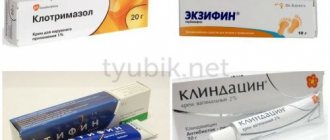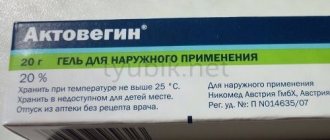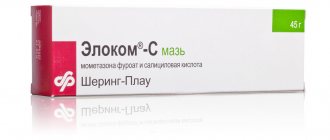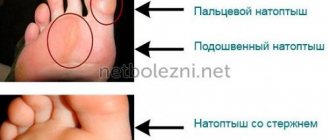Directions for use and doses
Dex-Gentamicin eye ointment (1 cm long strip) is placed in the conjunctival sac 2-3 times a day. When applying the ointment, the tube should not come into contact with the non-sterile skin of the eyelid and the mucous membrane. In case of additional use of other ophthalmic local agents, a break of at least 15 minutes should be observed. The average duration of treatment is 2-3 weeks. To more accurately determine the duration of the course of therapy, it is necessary to evaluate the effectiveness of the drug, the severity of the symptoms of the disease, and the risk of side effects.
Gentamicin ointment for external use. approx. 1 mg/g 25 g tube No. 1
International nonproprietary name: Gentamicin/Gentamicin. Synonyms: None
Pharmacotherapeutic group Aminoglycoside antibiotic for local use.
Composition: 1 g of ointment contains 1 mg of gentamicin sulfate.
Pharmacological action Pharmacodynamics Gentamicin is characterized by a wide spectrum of antimicrobial action. Active against most gram-negative and gram-positive microorganisms: Pseudomonas aeruginosa, Escherichia coli, Proteus spp., Klebsiella spp., Serratia spp., Salmonella spp., Shigella spp., Staphylococcus spp., including multi-resistant strains. The drug does not act on anaerobic bacteria, fungi, viruses. Has a bactericidal effect. Actively penetrating the bacterial cell membrane, it binds to the 30S subunit of bacterial ribosomes and inhibits the synthesis of the pathogen protein. Pharmacokinetics Gentamicin penetrates poorly through intact skin and mucous membranes; as a result, when applied topically as an ointment, the drug has virtually no resorptive effect. Duration of action after a single use is 812 hours. When applied to damaged skin, it is easily absorbed. Gentamicin is excreted unchanged by the kidneys, mainly due to glomerular filtration.
Indications for use Gentamicin ointment is used in surgery for local treatment of wounds (in the second phase of the wound process) to prevent purulent complications; for the treatment of burns II-IIIA degrees (in the second phase of the wound process) and frostbite; for the treatment of pyoderma, superficial folliculitis, furunculosis, infected seborrheic dermatitis, infected acne, eczema, with secondary bacterial infection with fungal and viral skin lesions, infected varicose ulcers, with household injuries (for the treatment of small wounds and cuts).
Method of application and dosage regimen Gentamicin ointment is used externally. The medicine is applied to the affected area of the skin, after removal of pus and necrotic masses, in a thin layer 23 times a day, for burns 23 times a week. For extensive burn lesions, the daily dose of ointment should not exceed 200 g (200 mg of antibiotic). The duration of treatment depends on the form and severity of the disease and is 714 days. When treating dermatological diseases, the drug is applied in a thin layer to the affected area 23 times a day, or applied to a gauze bandage, followed by application to the affected area of the skin. The duration of treatment is 714 days. In the presence of exudate, wounds and erosion are preliminarily washed with solutions of furatsilin (1:5000), hydrogen peroxide (3%) or boric acid (12%).
Side effects When using gentamicin ointment, local irritation (redness, itching) and allergic reactions (skin rash, itching, urticaria) are possible. If allergic reactions occur, the drug is discontinued and desensitizing therapy is carried out.
Contraindications The use of the drug is contraindicated in case of increased individual sensitivity to gentamicin.
Interaction with other drugs It should not be prescribed simultaneously with other antibiotics that have oto- and nephrotoxic effects (streptomycin, kanamycin, florimycin, monomycin, ristamycin), with furosemide. The activity of gentamicin decreases in the presence of Na+, K+, Ca++, Mg++ ions, as well as a number of anions (sulfates, phosphates, nitrates, etc.). There is evidence of the synergism of combinations of gentamicin with dioxidine and an increase in its therapeutic effectiveness when used together with corticosteroids.
Overdose With long-term use of the drug in doses exceeding the recommended ones, nephrotoxic (proteinuria, azotemia, etc.) and ototoxic (vestibular disorders, rarely hearing loss) effects, hyperbilirubinemia, increased activity of liver transaminases, changes in the cellular composition of peripheral blood are possible.
Release form: ointment for external use 0.1% in aluminum tubes of 25.0.
Contraindications
Dexa-Gentamicin ointment should not be prescribed for:
- Fungal infection of the eyes;
- Arborescent keratitis (infection with herpes zoster), chickenpox and other viral invasions of the cornea and conjunctiva;
- Acute purulent lesions of the epithelial layer of the cornea;
- Mycobacterial infectious processes;
- Intraocular hypertension;
- Epitheliopathy of the corneal layer;
- Intolerance to the components of the drug.
During treatment with Dex-Gentamicin, patients are prohibited from wearing contact lenses.
Gentamicin
The sodium metabisulfite contained in ampoules can cause the development of allergic complications in patients, especially in patients with an allergic history.
Patients with infectious and inflammatory diseases of the urinary tract are recommended to take increased amounts of fluid.
During treatment with aminoglycosides, the concentration of the drug in the blood serum should be determined (to prevent the administration of low ineffective doses or, conversely, an overdose of the drug), and also monitor the clearance of creatine, especially in the elderly.
The likelihood of developing nephrotoxicity is higher in patients with impaired renal function, as well as when prescribing high doses or for a long time, therefore regularly (1 or 2 times a week, and in patients receiving high doses or being treated for more than 10 days - daily ) renal function should be monitored.
To avoid the development of hearing impairment, it is recommended to regularly (1 or 2 times a week) test vestibular function to determine hearing loss at high frequencies (if audiometric tests are unsatisfactory, the dose of the drug is reduced or treatment is stopped).
During treatment, microbial resistance may develop. In such cases, it is necessary to discontinue the drug and prescribe treatment based on the antibiogram data.
During treatment with aminoglycosides, the concentration of the drug in the blood serum should be determined (to prevent the administration of low ineffective doses or, conversely, an overdose of the drug), and also monitor the clearance of creatine, especially in the elderly.
The likelihood of developing nephrotoxicity is higher in patients with impaired renal function, as well as when prescribing high doses or for a long time, therefore regularly (1 or 2 times a week, and in patients receiving high doses or being treated for more than 10 days - daily ) renal function should be monitored.
To avoid the development of hearing impairment, it is recommended to regularly (1 or 2 times a week) test vestibular function to determine hearing loss at high frequencies (if audiometric tests are unsatisfactory, the dose of the drug is reduced or treatment is stopped).
During treatment, microbial resistance may develop. In such cases, it is necessary to discontinue the drug and prescribe treatment based on the antibiogram data.
Side effects
After placing Dex-Gentamicin ointment into the conjunctival sac, temporary allergic reactions, including a burning sensation, are possible. During therapy, secondary glaucoma and steroid cataract may occur. Therefore, caution is required when prescribing Dex-Gentamicin for a history of glaucoma. If the course of treatment exceeds 2 weeks, it is necessary to regularly check intraocular pressure.
If any side effects occur, you should stop treatment and visit an ophthalmologist.
Gentamicin ointment 1 mg/g 25 g No. 1
Name
Gentamicin ointment 0.1% (RB)
Description
The ointment is white to yellow.
Compound
per tube: active substance - gentamicin (in the form of gentamicin sulfate) - 25 mg; excipients - solid paraffin 52-54, liquid paraffin, soft paraffin, white.
Pharmacotherapeutic group
Antibiotics for external use. ATC code: D06AX07.
pharmachologic effect
Gentamicin is characterized by a wide spectrum of antimicrobial action. Active against most gram-negative and gram-positive microorganisms: Pseudomonas aeruginosa, Escherichia coli, Proteus spp., Klebsiella spp., Serratia spp., Salmonella spp., Shigella spp., Staphylococcus spp., including multi-resistant strains. The drug does not act on anaerobic bacteria, fungi, viruses. Has a bactericidal effect. Actively penetrating the bacterial cell membrane, it binds to the 30S subunit of bacterial ribosomes and inhibits the synthesis of the pathogen protein.
Indications for use
Primary skin infections: impetigo, superficial folliculitis, furunculosis, infected acne. Secondary skin infections: infectious eczematoid dermatitis, infected seborrheic dermatitis, infected abrasions and bacterial superinfections in fungal and viral skin lesions (see section "Precautions"), In surgery: treatment of infected skin cysts and skin abscesses after opening and drainage. Infected varicose ulcers, infected superficial (II-IIA degrees) burns. Minor wounds and cuts.
Directions for use and doses
Gentamicin ointment is applied externally to dry skin. The drug is applied to the affected area of the skin after removal of pus and necrotic masses, in a thin layer 2-3 times a day, for burns - 2-3 times a week. For extensive burn lesions, the daily dose of ointment should not exceed 200 g (200 mg of antibiotic). The duration of treatment depends on the form and severity of the disease and ranges from 1-14 days. When treating dermatological diseases, the drug is applied in a thin layer to the affected area 2-3 times a day, or applied to a gauze bandage, followed by application to the affected area of the skin. The duration of treatment is 7-14 days. In the presence of exudate, wounds and erosion are preliminarily washed with solutions of furatsilin (1:5000), hydrogen peroxide (3%).
Side effect
When using gentamicin ointment, manifestations of local irritation (redness, itching, burning sensation), allergic reactions (skin rash, itching, urticaria, fever, angioedema, eosinophilia) are possible. If allergic reactions occur, the drug is discontinued and desensitizing therapy is carried out. When using gentamicin externally for a long time on large surfaces of the skin, the possibility of a resorptive effect must be taken into account, especially in patients with chronic renal failure. After topical use of gentamicin ointment, especially with prolonged use of the ointment on a large wound surface, ototoxic, vestibular and nephrotic effects are possible. If the above adverse reactions or adverse reactions not listed in these instructions for medical use of the drug occur, you should consult a doctor.
Contraindications
Hypersensitivity to gentamicin or any of the auxiliary components. Concomitant systemic administration of aminoglycosides (see section "Precautions"). Renal failure (see section "Precautions"). Children under 3 years of age, pregnancy (1st trimester). Gentamicin ointment is not intended for application to mucous membranes, including the mucous membrane of the eyes. If it is necessary to apply to large surfaces of the skin, the drug is used with caution for neuritis of the auditory nerve.
Overdose
With long-term use of the drug in doses exceeding the recommended ones, with extensive skin lesions, nephrotoxic (proteinuria, azotemia, etc.) and ototoxic (vestibular disorders, rarely - hearing loss) effects, hyperbilirubinemia, increased activity of liver transaminases, changes in the cellular composition of peripheral blood are possible.
Precautionary measures
Gentamicin sulfate is a bactericidal agent that is not effective against viral or fungal skin diseases. Treatment is carried out under the supervision of an antibiogram of the drug, since local use of antibiotics, including gentamicin, can lead to the growth of insensitive pathogens, including fungi. In this case, as well as in the event of skin irritation, an allergic reaction or superinfection, treatment with gentamicin should be interrupted and appropriate therapy administered. If there is no therapeutic effect within 1 week, you should consult your doctor. Gentamicin ointment is not recommended for use with concomitant systemic administration of aminoglycosides, as well as in patients with renal failure, as the risk of toxic effects of aminoglycosides increases. Local use of gentamicin in the treatment of skin infections is accompanied by a risk of allergic reactions, the frequency of which increases with increasing duration of use. Group sensitization has been observed with gentamicin and other aminoglycosides such as neomycin and kanamycin. When treating large areas of skin, especially over a long period or in the presence of skin lesions, systemic absorption of gentamicin may be increased. Caution is warranted in these conditions, especially in children, as the risk of systemic side effects from gentamicin is increased. Due to the presence of neuromuscular blocking effects in systemic exposure to aminoglycosides, caution must be exercised in patients with myasthenia gravis, Parkinson's disease and other diseases accompanied by muscle weakness, as well as when using other drugs with a neuromuscular blocking effect simultaneously. Due to the presence of white soft paraffin and liquid paraffin, gentamicin ointment may reduce the tensile strength of latex condoms, thereby reducing the safety of their use. This must be taken into account when using gentamicin ointment in the genital or anal area. Use in elderly patients requires caution and timely assessment of renal function.
Use during pregnancy and lactation
Gentamicin penetrates the hematoplacental barrier and reaches fetal tissue. Animal studies have demonstrated reproductive toxicity of gentamicin. Gentamicin ointment should not be used in the first trimester of pregnancy. In the II-III trimesters, the use of gentamicin ointment is possible when the expected benefit to the mother outweighs the potential risk to the fetus. Gentamicin is excreted in small quantities into breast milk. Due to the lack of absorption of the drug from the gastrointestinal tract, the occurrence of side effects during breastfeeding is unlikely.
Impact on the ability to drive vehicles and other potentially dangerous mechanisms
Due to the possibility of developing adverse reactions when using the drug, care must be taken when driving vehicles and when engaging in activities that require increased concentration.
Interaction with other drugs
It should not be prescribed simultaneously with other antibiotics that have oto- and nephrotoxic effects (streptomycin, kanamycin, florimycin, monomycin, ristamycin), with furosemide. The activity of gentamicin decreases in the presence of Na+, K+, Ca++, Mg++ ions, as well as a number of anions (sulfates, phosphates, nitrates, etc.). There is evidence of synergy between combinations of gentamicin and dioxidine. Possible combined use with corticosteroids. In vitro, aminoglycosides are inactivated by penicillins and cephalosporins due to interaction with the β-lactam ring. Gentamicin is incompatible with heparin, solutions with an alkaline pH, and with drugs that are unstable at an acidic pH.
Storage conditions
At a temperature not exceeding 25°C. Keep out of the reach of children.
Best before date
3 years. Do not use after expiration date.
Package
In aluminum tubes of 25 g. Each aluminum tube for use is placed in a pack.
Release from pharmacies
On prescription.
special instructions
Due to the fact that there is not enough clinical data on the effectiveness and safety of Dex-Gentamicin eye ointment in some categories of patients (pregnant women, children, lactating women), the drug can be prescribed in these situations only after assessing the benefits and risks.
Immediately after applying the ointment, the patient may experience temporary blurred vision, and therefore should not drive a car during this period or engage in work that requires increased activity of psychomotor functions.




